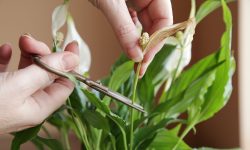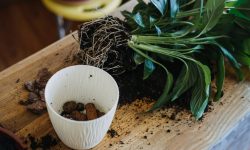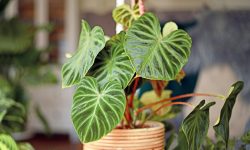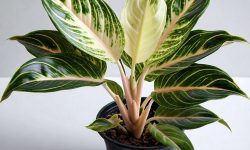Zinnias are among the most cheerful and colorful flowers you can grow, lighting up gardens with their dazzling shades and variety of shapes. Loved by pollinators and gardeners alike, zinnias are fast-growing, low-maintenance, and ideal for both beginners and seasoned plant enthusiasts. If you’re dreaming of a summer filled with vibrant blossoms, knowing the right time to plant zinnia seeds is crucial. This guide explores when and how to sow zinnia seeds for the best results, while offering expert insights on care, climate, and blooming habits across different growing zones.
Understanding Zinnias: Why Timing Matters
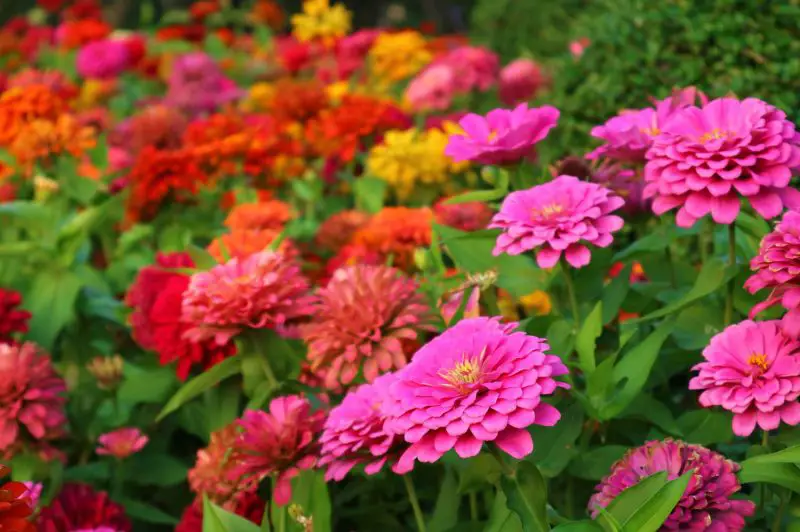
Zinnia Growth Cycle Overview
Zinnias are annual flowers, meaning they complete their entire life cycle—germination, flowering, and seed production—in one growing season. They are incredibly fast growers, typically blooming within 60 to 75 days after sowing. Their short cycle makes them a popular choice for gardeners who want quick results. However, despite their speed, zinnias are extremely sensitive to cold, and planting them too early can lead to slow growth or failure to sprout.
Importance of Soil Temperature
The ideal soil temperature for planting zinnia seeds is between 70 and 75 degrees Fahrenheit. Sowing seeds into cold or soggy ground slows germination, increases the risk of rot, and can stunt young seedlings. Because of this, zinnias are best planted after the last frost when the soil has warmed consistently.
Best Time to Plant Zinnia Seeds by Region
Southern United States (Zones 8–11)
In warmer regions, zinnias can be planted as early as late March or early April, depending on the local climate. Since frost is rarely a concern after early spring, gardeners in the South often enjoy longer growing seasons and can even succession-plant zinnias every few weeks to ensure a continuous bloom through late summer and fall.
Midwest and Central U.S. (Zones 5–7)
For cooler zones, wait until all danger of frost has passed—usually late April to mid-May. The soil should feel warm to the touch and the weather should be consistently mild. It’s also common to start seeds indoors about four weeks before the last frost date and transplant young seedlings outside once conditions are stable.
Northern U.S. and Mountain Areas (Zones 3–4)
Shorter growing seasons in colder zones require careful timing. Outdoor planting usually begins in late May to early June. Starting seeds indoors in biodegradable pots six weeks before the last expected frost can give zinnias a valuable head start. Ensure they’re hardened off properly before planting them outdoors.
Pacific Coast and West Coast Climates
Zinnias do exceptionally well in California and coastal regions where summers are long and dry. Seeds can be planted in April or even March in the warmest areas. Because of the lower humidity and fewer pest issues, West Coast gardeners often see vibrant, long-lasting blooms well into autumn.
How to Start Zinnia Seeds Indoors
Benefits of Starting Indoors
Starting zinnia seeds indoors allows for better control over temperature and moisture during germination. It’s particularly useful in regions with unpredictable spring weather or short growing seasons. This method can also give gardeners a head start on blooms, especially when growing larger-flowered cultivars that need more time to mature.
Steps for Successful Indoor Germination
Use a seed-starting mix that drains well and retains moisture. Sow seeds just beneath the surface and lightly cover with soil. Keep the trays or containers in a warm spot with plenty of indirect light or under grow lights. A clear plastic dome or cover can help retain humidity. Expect germination within 5 to 10 days, after which seedlings should be exposed to brighter light to avoid legginess.
Direct Sowing Zinnias Outdoors
Succession Planting for Continuous Blooms
What is Succession Planting?
Succession planting involves sowing new seeds every two to three weeks throughout the growing season. This method ensures a continuous supply of fresh zinnias that bloom at different intervals, keeping your garden vibrant all summer long.
How to Plan Your Succession Schedule
Start your first batch of zinnia seeds right after the last frost date, then continue planting new sections every 14 to 21 days. Stop new sowings around 60 days before your region’s first expected fall frost to allow the last round of zinnias enough time to mature and bloom.
Tips for Healthy Zinnia Growth
Light and Water Requirements
Zinnias thrive in full sun and need at least six to eight hours of direct light daily. Water at the base of the plant to avoid wetting the leaves, which can lead to fungal diseases. Deep, infrequent watering encourages strong root systems and more drought-tolerant plants.
Fertilization and Feeding
While zinnias are not heavy feeders, they benefit from a balanced fertilizer applied once a month during the growing season. Too much nitrogen can cause lush foliage but fewer blooms, so opt for a bloom-boosting formula with a higher phosphorus content once the plants begin to bud.
Pruning and Deadheading
Regularly removing faded or dead flowers encourages the plant to produce more blooms. For bushier growth, pinch back the central stem when plants are young to encourage branching. This also creates a fuller look, ideal for garden borders or cutting gardens.
Common Issues and How to Prevent Them
Powdery Mildew
This white, powdery fungus often appears in humid or overcrowded conditions. Space plants appropriately and avoid overhead watering to minimize risk. Choose disease-resistant cultivars if mildew is a frequent problem in your area.
Leaf Spot and Bacterial Blight
These issues usually result from wet foliage or poor airflow. Remove affected leaves and dispose of them—do not compost diseased plant matter. Applying neem oil or a mild fungicide early can help prevent further spread.
Pests
Aphids, spider mites, and Japanese beetles may target zinnias, especially in midsummer. Hand-picking, insecticidal soap, or introducing beneficial insects like ladybugs can help control infestations.
Harvesting Zinnias for Cut Flowers
When to Cut for Best Vase Life
The best time to cut zinnias is when the flower is fully open and the stem feels firm. Zinnias don’t continue to open much once cut, so don’t harvest them too early. Morning is the ideal time to cut, when plants are fully hydrated.
Post-Harvest Care
Immediately place stems in a bucket of clean, cool water and allow them to rest for a few hours before arranging. Strip lower leaves and re-cut stems at an angle for maximum water uptake. Change water regularly to prolong vase life, which can last 7 to 10 days with proper care.
Saving Zinnia Seeds for Future Planting
How to Collect Seeds
At the end of the growing season, allow a few flowers to dry completely on the plant. Once the seed heads turn brown and brittle, gently pull them apart to reveal the seeds hidden within. Allow the seeds to dry thoroughly indoors before storing.
Storing Zinnia Seeds
Place dried seeds in paper envelopes or glass jars labeled with the variety and date. Store them in a cool, dark, and dry place. Properly stored zinnia seeds can remain viable for up to five years, though fresher seeds tend to germinate more reliably.
FAQ
When is the best time to plant zinnia seeds in different climates?
The optimal time to plant zinnia seeds depends heavily on your region’s last frost date. Zinnias are warm-season annuals that do not tolerate frost. In USDA hardiness zones 3 through 7, zinnias should be direct-sown or transplanted outdoors after the final spring frost—typically from mid-April to early June, depending on your zone.
In warmer zones such as 8 through 11, zinnias can be started earlier—often in late March or early April—and sometimes even planted in succession for multiple bloom cycles throughout the season. Gardeners in tropical climates may be able to plant zinnias nearly year-round, though extreme heat may limit bloom longevity during peak summer.
Can I start zinnia seeds indoors before the last frost?
Yes, you can start zinnia seeds indoors about 4 to 6 weeks before your region’s last frost date. This gives the plants a head start, resulting in earlier blooms once they’re transplanted outdoors. However, zinnias dislike root disturbance, so it’s essential to start them in biodegradable pots or cell trays to minimize transplant shock.
Keep the indoor environment warm—ideally between 70–75°F (21–24°C)—and place the seedlings under bright grow lights or near a south-facing window. Harden them off by gradually exposing them to outdoor conditions for 7–10 days before transplanting.
How long does it take for zinnia seeds to germinate?
Zinnia seeds typically germinate within 5 to 10 days under ideal conditions. Germination speed depends on soil temperature, moisture, and seed freshness. Warmer soils between 70–80°F (21–27°C) will yield the fastest results. If temperatures are cooler than 60°F (15°C), germination may be delayed or erratic.
Be sure to keep the soil consistently moist—but not soggy—during this period. Dry soil can cause seedlings to fail, while overly wet conditions can promote fungal problems like damping-off.
Do zinnias need full sun to thrive?
Yes, zinnias perform best in full sun, which means they require at least 6 to 8 hours of direct sunlight each day. In less-than-ideal lighting, plants may become leggy, weak, or produce fewer blooms. Full sun exposure encourages strong stems, vibrant colors, and an extended blooming season.
If you’re growing zinnias in containers on a patio or balcony, choose the brightest location possible. If morning sun is all that’s available, prioritize varieties that are more compact, as they tolerate partial sun slightly better than the tall, long-stemmed types.
How do I know if my soil is ready for sowing zinnia seeds?
You can test your soil’s readiness by checking both temperature and texture. Ideally, soil temperature should be at least 60°F (15°C) and climbing before you sow zinnia seeds outdoors. You can measure this with a simple soil thermometer, inserted about 2 inches deep.
The soil should also be workable—not soggy or clumpy. If the soil forms a tight ball in your hand when squeezed, it may still be too wet from spring rains. Wait until it crumbles easily, which indicates proper moisture and drainage for seed sowing.
How far apart should I space my zinnia seeds?
Spacing depends on the variety. For smaller zinnias like ‘Thumbelina’ or dwarf cultivars, seeds can be spaced 6 to 8 inches apart. Larger varieties such as ‘Benary’s Giant’ or ‘State Fair’ should be spaced 12 to 18 inches apart to allow proper airflow and prevent disease.
Planting too closely can lead to overcrowding, poor air circulation, and increased risk of powdery mildew. It may also reduce flower size and overall vigor. Always thin seedlings to their appropriate spacing once they’ve developed their second set of leaves.
How long does it take zinnias to bloom after planting?
Zinnias generally bloom 6 to 8 weeks after germination, depending on the variety and growing conditions. Some fast-maturing dwarf types may start blooming as early as 5 weeks, while taller varieties take closer to 8 or even 9 weeks to produce their first flowers.
To encourage continuous blooms, deadhead spent flowers regularly. This signals the plant to produce more buds rather than putting energy into seed production. With proper care, zinnias will continue blooming into the fall until the first frost.
Can I succession plant zinnias for continuous blooms?
Yes, succession planting is a great strategy to ensure constant color throughout the summer. You can sow a new round of seeds every 2 to 3 weeks, especially in longer growing seasons. This practice guarantees that as one batch starts to decline, a younger generation of plants begins blooming.
Succession planting is especially useful in cutting gardens where fresh blooms are continually harvested. It also helps extend the zinnia season in areas with unpredictable weather or pest pressure.
What common problems affect zinnias, and how can I prevent them?
Zinnias are generally low-maintenance, but they can face issues like powdery mildew, leaf spot, aphids, and spider mites. Powdery mildew is most common in humid conditions with poor airflow. To prevent it, space plants adequately, water at the base, and avoid wetting the foliage.
If you see white, dusty spots or leaves turning yellow and curling, consider applying a neem oil spray or sulfur-based fungicide. Aphids and mites can be managed with insecticidal soap or by encouraging beneficial insects like ladybugs.
Rotating planting locations each year and cleaning up plant debris at the end of the season also reduce disease risk.
Are zinnias deer-resistant or pollinator-friendly?
Zinnias are moderately deer-resistant, as their textured foliage is not especially appealing to most grazing animals. However, in areas with heavy deer populations or during dry seasons when food is scarce, zinnias may still be nibbled.
On the other hand, zinnias are excellent for attracting pollinators. Bees, butterflies, and even hummingbirds are frequent visitors to zinnia gardens. Planting zinnias among vegetables or fruit trees can help improve pollination and increase overall biodiversity in your garden.
Can I save zinnia seeds for next year?
Yes, saving zinnia seeds is easy and rewarding. Allow some blooms to dry fully on the plant until the flower head turns brown and crispy. Remove the dried head and separate the seeds from the petals. Store them in a cool, dry place in an envelope or glass jar, clearly labeled with the variety and collection date.
Keep in mind that if you’re growing hybrid zinnias, the seeds may not produce plants identical to the parent. For best results, save seeds from open-pollinated or heirloom varieties.
Conclusion
Planting zinnia seeds at the right time is the first—and perhaps most important—step toward a summer filled with bold, vibrant color and effortless garden charm. By understanding your local climate, tracking frost dates, and choosing the best sowing method for your space, you set the stage for a season of continuous blooms that attract pollinators, brighten landscapes, and provide endless cut flowers for your home.
Zinnias reward even the most novice gardeners with quick germination, easy maintenance, and an impressive range of shapes and colors. Whether you’re tucking a few seeds into patio containers or designing a full-scale cutting garden, zinnias deliver spectacular results with minimal fuss. Start them indoors for an early jumpstart or sow directly into the warm earth once spring settles in—either way, your garden will thank you.
With the right timing and care, zinnias can transform your outdoor space into a floral paradise that lasts all summer long. So grab a packet of seeds, watch the weather, and plant with confidence—your most beautiful garden season yet is just a few weeks away.

